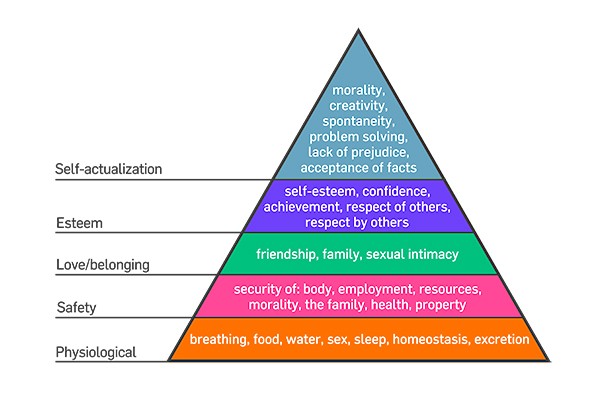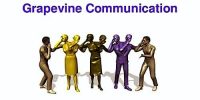It was in 1943 a Psychologist Mr. Abraham Harold Maslow suggested his Theory of Human Motivation. According to Maslow, human behavior is related to his needs. It is adjusted as per the nature of needs to be satisfied. He focused on the psychological desires of employees. Maslow’s hierarchy of needs is a motivational theory in psychology comprising a five-tier model of human needs, often depicted as hierarchical levels within a pyramid. He put further a theory that there are five levels in a hierarchy of human needs that employees require having satisfied at work.
Hierarchy of needs theory summary –
- human beings are motivated by a hierarchy of needs.
- needs are organized in a hierarchy of prepotency in which more fundamental needs must be more or less met prior to higher needs.
- the order of needs is not rigid but instead might be flexible based on peripheral condition or person differences.
- most behavior is multi-motivated, that is, simultaneously indomitable by more than one fundamental need.
Assumptions of Maslow’s Theory –
Maslow proposed that motivation is the result of a person’s attempt at fulfilling five basic needs: physiological, safety, social, esteem and self-actualization. Maslow’s theory is based on the following assumptions:
- People’s behavior is based on their needs. Satisfaction of such needs influences their behavior. Maslow believed that human behavior is based on their needs. Man is a wanting being, i.e. his wants are growing continuously even when some wants are satisfied. Satisfaction of such needs influences their behavior. When one need is satisfied, they will move to strive for other needs. Human needs are of a varied and diversified nature.
- A satisfied need does not motivate. People’s needs are in hierarchical order, starting from basic needs to other higher level needs. Needs have a definite hierarchy of importance. A satisfied need can no longer motivate a person to work; only next-higher level need can motivate him. As soon as needs on a lower level are fulfilled, those on the next level will emerge and demand satisfaction. This suggests that bread (food) is essential and is a primary need of every individual. According to Maslow, “Man does not live by bread alone”. This conclusion of Maslow is a practical reality and needs to be given adequate attention while motivating employees.
- A satisfied need can no longer motivate a person; only next higher level need can motivate him. A satisfied need does not act as a motivator. A person moves to the next higher level of the hierarchy only when the lower need is satisfied. The needs network for most people is complex, with several affecting the behavior of each person at any one time.
- As one need is satisfied, another replaces it. A person moves to the next higher level of the hierarchy only when the lower need is satisfied. When one need is satisfied another need emerges to take its place, so people are always striving to satisfy some need. In general, lower level needs must be satisfied before higher level needs are activated sufficiently to drive behavior.
According to Maslow, individuals are motivated by unsatisfied needs. As each of these needs is significantly satisfied, it drives and forces the next need to emerge.
Maslow’s Theory focuses on needs as the basis for motivation. This theory is widely recognized and appreciated. However, some of his propositions are questioned on his classification of needs and hierarchy of needs. But, despite such criticism, the theory is still relevant because needs, no matter how they are classified, are important to understand the behavior. It helps managers to realize that the need level of employee should be identified to provide motivation to them.
Limitation of Assumption –
The hierarchy of basic needs is not constantly permanent. Dissimilar people might have diverse orders. For example, in case of artistic people like singers, painters, etc. their self-actualization needs may become the dominant motivation force even before their lower order needs are satisfied.
The level of satisfaction for exacting need might differ from person to person. A person tries for his higher level need when his lower order need is realistically satisfied.















